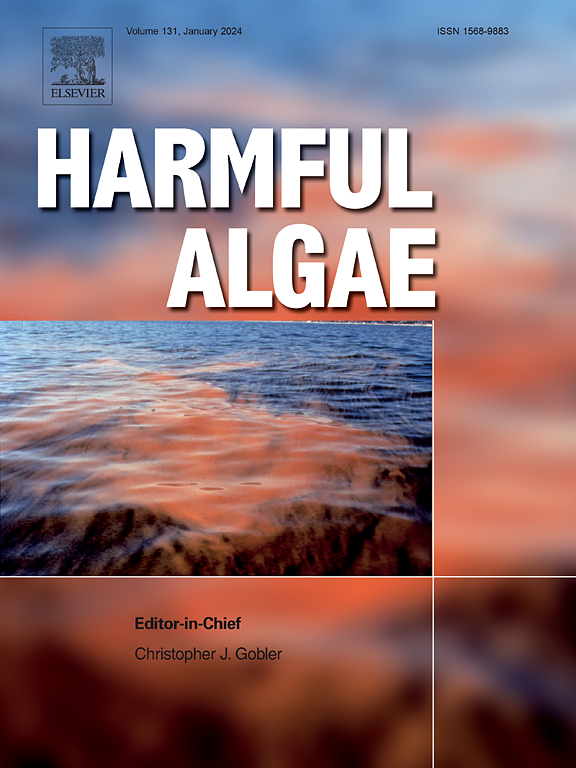Determinism of anatoxin-a production in Phormidium-dominated biofilms of a regulated river (Ain, France)
IF 4.5
1区 生物学
Q1 MARINE & FRESHWATER BIOLOGY
引用次数: 0
Abstract
Benthic cyanobacteria have been increasingly held responsible for bird and mammal deaths along riverbanks in the last decades. However, little is known about the environmental conditions that favor their development, spatiotemporal dynamics and associated toxins. In the summer of 2020, we monitored physical, chemical and biological variables, quantified benthic cyanobacteria and measured anatoxin-a concentration in the biofilms of four reaches of the dam-regulated Ain River, France. The main potential anatoxin producer was Phormidium, often associated with Oscillatoria mats in the same field campaigns. Anatoxin-a detectable concentrations ranged from 0.5 to 197µg/g of dry weight showing a high spatial heterogeneity. According to structural equation modelling, anatoxin-a concentrations increased with water depth in a range of 20 to 80 cm. In contrast, the chlorophyta biovolume and the flow velocity were the main factors negatively correlated with anatoxin-a concentrations. Although flow velocity did not limit the biovolume of potential anatoxin producers, it could induce stress to the cyanobacterial mats within the river, causing a limitation of anatoxin-a concentrations. Finally, the effects of these drivers on anatoxin-a production demonstrated a high variability over the summer. This high temporal variability of both benthic cyanobacteria biomass and anatoxin-a concentration makes risk assessment relatively challenging.
一条受管制河流中磷主导的生物膜中anatoxin-a生成的确定性(Ain, France)
在过去的几十年里,越来越多的底栖蓝藻被认为是造成河岸鸟类和哺乳动物死亡的罪魁祸首。然而,人们对其发育的环境条件、时空动态和相关毒素知之甚少。在2020年夏季,我们监测了物理、化学和生物变量,量化了底栖蓝藻,并测量了法国水坝管制的艾因河四条河段生物膜中的anatoxin-a浓度。在相同的田间活动中,主要潜在的anatoxin生产者是Phormidium,通常与振荡藻垫相关联。Anatoxin-a的检测浓度范围为0.5 ~ 197µg/g干重,具有较高的空间异质性。根据结构方程模型,在20 ~ 80 cm范围内,anatoxin-a浓度随水深的增加而增加。绿藻生物量和流速是与褐藻毒素a浓度负相关的主要因子。虽然流速没有限制潜在的安纳托毒素产生者的生物量,但它可能对河流内的蓝藻垫造成压力,导致安纳托毒素a浓度的限制。最后,这些驱动因素对阿那托毒素a产量的影响在夏季表现出很高的变异性。底栖蓝藻生物量和anatoxin-a浓度的高时间变异性使得风险评估相对具有挑战性。
本文章由计算机程序翻译,如有差异,请以英文原文为准。
求助全文
约1分钟内获得全文
求助全文
来源期刊

Harmful Algae
生物-海洋与淡水生物学
CiteScore
12.50
自引率
15.20%
发文量
122
审稿时长
7.5 months
期刊介绍:
This journal provides a forum to promote knowledge of harmful microalgae and macroalgae, including cyanobacteria, as well as monitoring, management and control of these organisms.
 求助内容:
求助内容: 应助结果提醒方式:
应助结果提醒方式:


